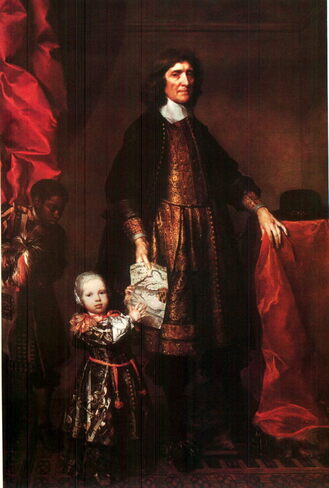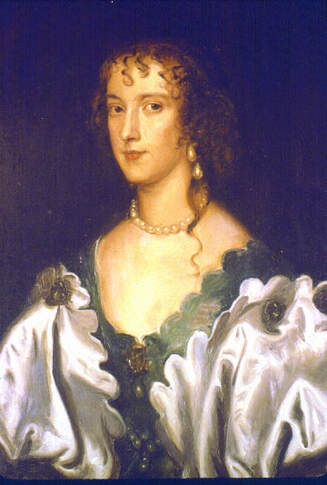Stories of intrigue and interest from the curator with 33 years of experience at Historic St. Mary’s
- Tales From A Curator by Silas Hurry
- Jan 7, 2020
- 4 min read
Updated: Mar 4, 2021

A Brief History of Charles Calvert
“While his father Cecil was a Leo, Charles Calvert was a Virgo. His birthday was August 27, 1637. Charles was Cecil and Anne Arundel’s eldest child, born a mere four years after the Maryland colonists departed from the Isle of Wight. Charles was one of nine children born to Cecil and Anne. Only he and two of his siblings reached adulthood.
(EDIT: Cecil and Anne Arundel had a son before Charles - Charles was not Cecil's first son. George (1634-1636) was born before Charles but died at two years of age)
Charles's mother died when he was only 12 years old. His deep affection for his mother Anne is expressed in 1672 when he writes his father from Maryland and says “And hope yor Lordship will bee mindfull of a Consideration for my trouble in their business, I shall bee very Glad to haue my mothers picture which yor Lopp thinkes to send mee next yeare.”
Charles, age 24, and his wife Mary Darnall arrived in St. Mary’s City in 1660 and settled into residence at St. John’s. Charles became governor while his uncle Philip served as Chancellor. Tragically, Mary and her child died in childbirth sometime before 1667. Charles married as his second wife Jane Sewell, widow of Henry Sewall. In 1713, Charles wrote to his estranged son Benedict Leonard “For many persons in Maryland know but to well that she and I were Whore and Rogue together long before I played the weake Man, and married her.” Charles and Jane moved to what had been her husband’s plantation, Mattapany located aboard the Patuxent Naval Air Center. The successor to their home is the current Mattapany which serves as the home of the senior ranking officer on the installation.
Charles and Jane had several children and Jane had children from her marriage to Henry Sewall. The oldest Calvert son was named Cecil after his grandfather. He is the child depicted as receiving the map of Maryland in the portrait of Cecil, Lord Baltimore (above). Charles’s son Cecil is referred to as “Little Cis” in the correspondence of his father to his grandfather. Sadly, Little Cis died before reaching adulthood.

Charles succeeded his father as Baron of Baltimore and Lord Proprietor in 1675. He was the only Lord Baltimore to be resident in the colony. After Cecil’s death, Charles traveled to London to be invested as the Baron of Baltimore and to settle his father’s estate and move the policies of the colony forward. He returned to Maryland and the colony entered a relatively peaceful phase with the usual political intrigue and economic instability. In 1684 Charles Calvert determined he had to return to England. In 1681 William Penn had been granted land north of Maryland that would become Pennsylvania. There was, however, a problem. Where was the border between the two colonies? Calvert began an argument that outlived both him and Penn and was not settled until 1769 with the surveying of the Mason Dixon line. Perhaps more on that subject in some other post.

While Charles Calvert was in England, massive political change unfurled. James II was deposed and William and Mary succeeded to the throne. In Maryland, the Calvert government bumbled the royal succession and soon fell to the Protestant Associators. The Calvert family lost control of the government and in 1692 Maryland was named a Royal Colony with Lionel Copely appointed governor. Charles Calvert lived until 1715. Calvert's wife Jane died around 1693 or 1694, and he married a third time, to Mary Bankes, between 1701 and 1710. His fourth and final marriage was to Margaret Charleton in 1712. Charles Calvert was extremely long-lived surviving to the age of 78. Charles was estranged from his son and heir Benedict Leonard in his later years. In 1713, Benedict Leonard Calvert announced his conversion to Protestantism. If driven by deep philosophical consideration or a desire to re-acquire his family fortune, I will leave it to others to decide. When his father died in 1715, Benedict Leonard petitioned for the return of Maryland to the Calvert family. Before the process could work its way through the bureaucratic levels of George I’s government, Benedict Leonard died. His son, Charles, was named after his grandfather. The Fifth Lord Baltimore inherited the title and the Colony of Maryland was returned to the Calvert family who would continue to control it until the American Revolution.”
Silas D. Hurry, Curator of Collections and Archaeological Laboratory Director for Historic St. Mary’s City.
Silas has over forty years of experience in historical archaeology working in Maryland, Georgia, Michigan, and New Mexico. A native of the Southern Maryland region and an honors graduate of St. Mary’s College of Maryland in History and Anthropology, he subsequently attended graduate school at Cambridge University in the United Kingdom. Silas is the author of numerous articles and essays on the archaeology of St. Mary’s City including the exhibit catalog “..once the Metropolis of Maryland” and The Whole Site is the Artifact: Interpreting the St. John’s Site, St. Mary’s City, Maryland. (with Dorsey Bodeman) in Past Meets Present Archaeologists Partnering with Museum Curators, Teachers and Community Groups edited John H. Jameson and Sherene Baugher.






Comments